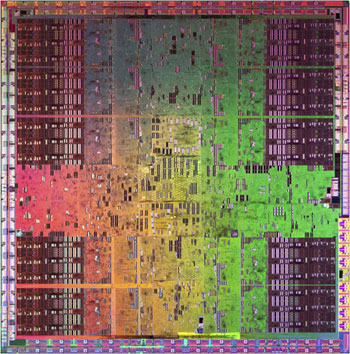
Back on track
We have been following Nvidia for many years now and we’ve noticed a number of changes in the past 18 months. Some of them have been good, others not so good. The biggest change we’ve noticed is one that was difficult to spot at first, but we think we’ve nailed it now.Reading back through and analysing our notes for this article, we couldn’t help but feel that Nvidia has lost the focus it used to have. It has been searching for new markets to compete in – some exciting, others less so – and as a result the core businesses have suffered.
I remember speaking to one Nvidia spokesperson in particular following the release of the ill-fated Radeon HD 2900 XT, where I asked how Nvidia would move forwards given the massive performance advantage it had. I felt it would be more difficult for the company to predict how high to jump with the next generation because it was clear that ATI was going to make a significant push forwards.
The spokesperson assured me that the foot would not come off the gas... but it did for one reason or another. The only reasons I can come up with after many debates and discussions with the bit-tech team and a number of Nvidia spokespeople are that the company became complacent and lost its drive and focus in the process.

The Radeon HD 2900 XT... the card that caused Nvidia to take its foot off the gas
The result of that loss of focus was the GeForce 9 series, which was a lame follow up to the GeForce 8 series. Even if we disregard the GeForce 8800 GT and GeForce 8800 GTS 512 (which were, at one point, going to be the first products in the GeForce 9 series, but Nvidia decided against that because it feared that they’d cannibalise the GeForce 8800 sales in the busiest period of the year – they did that anyway, for what it’s worth), the GeForce 9 series was still a lame follow up to the excellent GeForce 8 series.
While ATI was fixing its leaky R600 graphics chip, Nvidia took its foot off the gas. Jokes about how many GPUs does it take to beat a G80 were high season, but they’d quickly come back to bite the company in the backside because even Nvidia itself hadn’t got a GPU that could give G80 a serious pummelling.

Nvidia's GT200 die
Much of GT200’s focus was on general computing performance rather than out and out graphics performance – the increased die size and shader count didn’t deliver the kind of performance improvement in games we were expecting, despite taking a toll in terms of heat, power usage and cost. That, in some ways, could be seen as a mistake today, but further down the line it may turn out to be quite the opposite.
GT300, Nvidia’s next-generation part, will continue the push down the GPU computing route further but we’re hoping that the balance will be much better. Only time will tell if it is evidence that Nvidia has regained its focus and is very much alive and kicking in the performance graphics card market.
What we do know is that it’s going to be another giant slab of silicon – well over 500mm² – and we expect it to perform well, but will it perform well enough? AMD is very close to launching its next generation GPUs and the company has already demoed them on a number of occasions – it’s looking promising, that’s for sure.

MSI MPG Velox 100R Chassis Review
October 14 2021 | 15:04








Want to comment? Please log in.